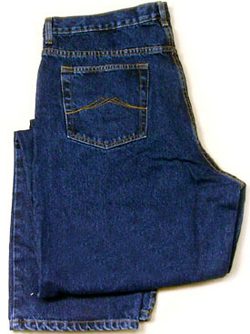“Tell me how you use your jeans, and I will tell you how you contribute to harming our planet’s environment!”
 A research report from the French Agency for the Environment and Energy Management (Ademe) made this statement and proposed some fundamental principles to respect our natural environment. The report analyzes the life cycle of a pair of jeans, from the cotton fields to the trash can.
A research report from the French Agency for the Environment and Energy Management (Ademe) made this statement and proposed some fundamental principles to respect our natural environment. The report analyzes the life cycle of a pair of jeans, from the cotton fields to the trash can.
Experts detail how a pair of jeans made from 600 grams of blue denim, with a 38-gram polyester lining, a button, and six rivets on the pockets, contributes to environmental harm. The owner wears these jeans once a week for four years, washing them after every three uses in a washing machine at a water temperature of 40 degrees Celsius and ironing them afterwards. Each of these processes consumes electricity and indirectly harms the environment.
Experts note that buying jeans made from cotton grown in India or Egypt has different environmental impacts due to transportation energy consumption. Cotton not treated with chemical fertilizers is less harmful to rivers and groundwater. Finally, it would be an ecological disaster if the jeans were produced in a country without regulations on wastewater treatment, as dyeing or bleaching processes release chemicals that pollute water sources. The more we wash our jeans, the more we harm the environment, since washing machines and irons consume electricity. According to report author Nadia Boeglin, high-end jeans that require dry cleaning are even more harmful to the environment than washing them with water, due to higher energy consumption and the use of various toxic chemicals.
Ms. Boeglin believes that many manufacturers are preparing to launch environmentally friendly jeans on the market. Regarding usage, she recommends adhering to some basic principles: Wear the jeans two days a week instead of one, wash them after five uses instead of three, and wash with cold water instead of hot; use detergent sparingly and effectively; skip ironing, and avoid using a dryer. Finally, she notes that the emissions from incinerating discarded jeans are equivalent to the exhaust from a motorcycle traveling 337 kilometers.
Ms. Boeglin adds: “We focus on jeans, but every everyday item comes with similar environmental harm issues. With a little attention, we can save 20% of greenhouse gas emissions. This issue relates to our attitude towards the environment.”
Truc Lam

















































